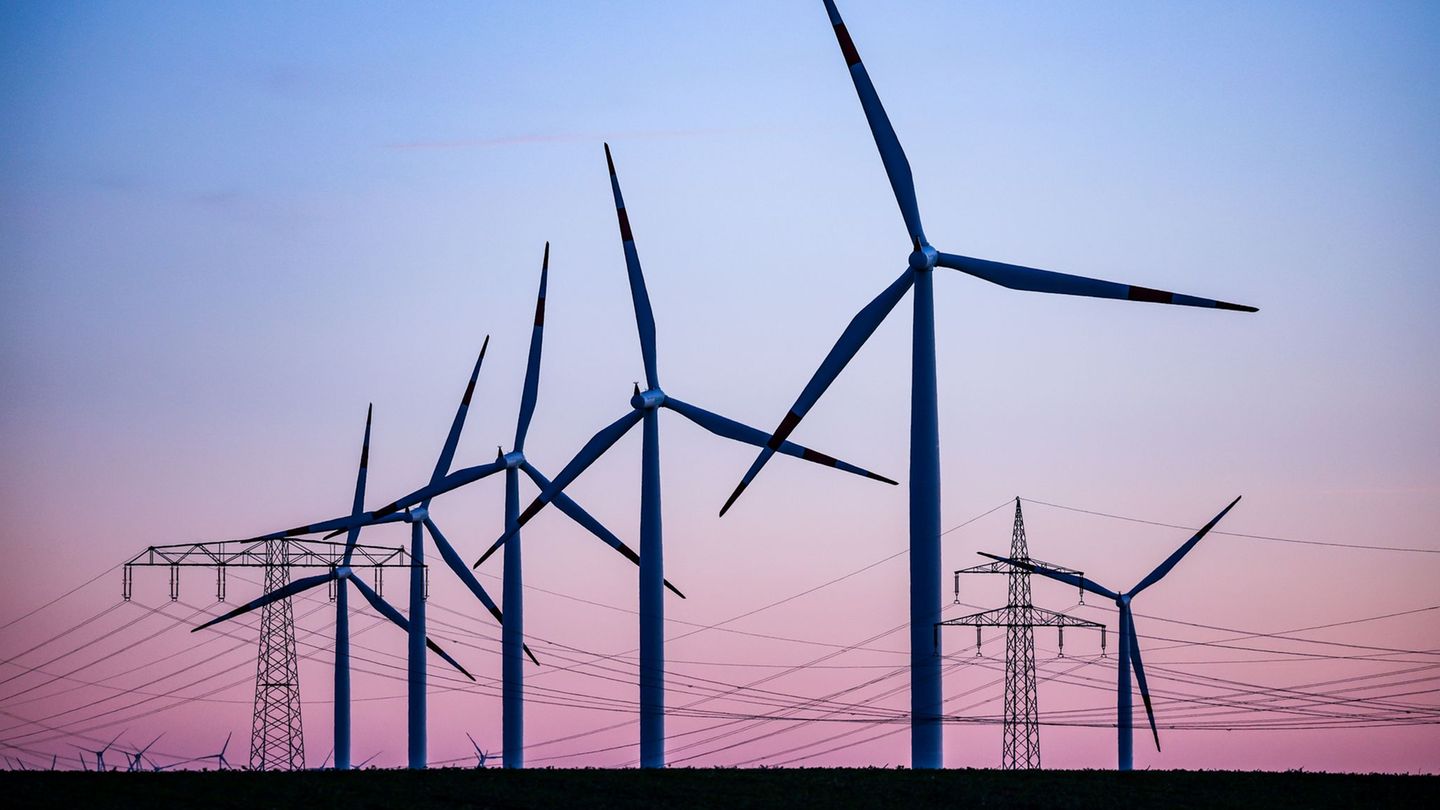Energy transition
Forecast: Expansion destination in wind turbines realistically for the first time
Copy the current link
Wind power on land plays a key role in the energy transition. The number of permits has recently attracted a lot. Can goals still be achieved?
The goal of expanding wind turbines on land in 2030 seems realistic for the first time after a new forecast. With the current dynamics in the federal states, the legally anchored endeavor is easily exceeded that wind turbines in 2030 produce a total of 115 gigawatts, as stated in a data analysis of the “Goal100” think tank.
GOAL100 mentions a significant increase in the number of applications and permits in recent years as well as a significantly shortened approval period.
At the end of 2024 the installed performance, i.e. the maximum possible performance, was around 63.5 gigawatts (GW) by wind turbines on land. This gives a gap to the goal in the Renewable Energy Sources Act of 69 Gigawatt in 2024.
Last year, however, as many new wind turbines were approved as never before – around 2,400 plants with a total output of around 14 gigawatts. According to the industry, it takes average a little more than two years before a wind turbine is built after approval and feeds the first electricity into the network.
According to the GOAL100 analysis, there are currently more than 50 GW of capacities in the wind power “pipeline”, which are at least approved. In order to close the current gap, however, a “consistent maintenance” of the current dynamics and an unchanged political ambition level was necessary.
The power grid expansion is a special challenge. The power grid must be able to integrate new wind turbines at low cost and compensate for temporary generation fluctuations.
According to the GOAL100, it is an independent think tank that wants to create data transparency to expand. The basis is therefore data from the Federal Network Agency’s market master data register and approval data from the federal states. For the first time, approval periods, realization times and commissioning between federal states, at the district and community level were compared and followed by the course of the time.
dpa
Source: Stern




